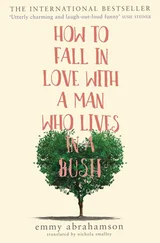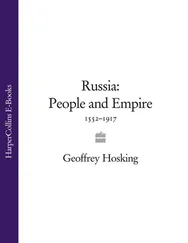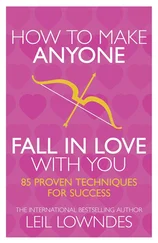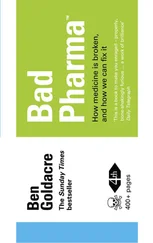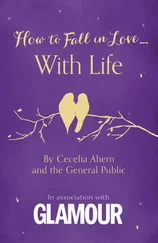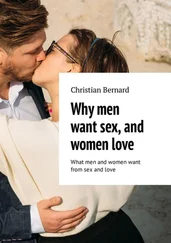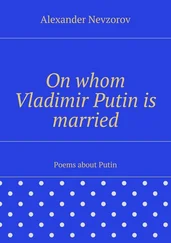The blogger Dmitry Drobnitsky spent the 2000s arguing with his friend Boris Mezhuev, a senior lecturer in philosophy at Moscow State University, about the new middle, creative or independent class. He insisted that it existed and that there was also a new ‘identity’ that it encompassed, that was much bigger and more important than the ‘middle class’ in terms of an income bracket. Working in management, in packaging and graphic production, Drobnitsky spent his days coming into contact with these people. His friend didn’t. Both op-ed columnists in the fiercely pro-government newspaper Izvestia , owned by Gazprom, a Putin ally, their confusion mirrored a broader confusion in Putinism. They met in Kofe Khaus, the smoke-filled knock-off Russian Starbucks, where they would hash out this dispute. One afternoon I dropped in on them and listened to Drobnitsky outline to Mezhuev his new not-quite-post-Soviet everywoman.
‘Who is this person? Who is the new middle class? Imagine her like this? She is thirty-eight and she came to Moscow from a provincial city with her friend. They lived together at first and things were pretty difficult. Her friend didn’t make it and went back to the sticks. They don’t talk so much anymore. She is working as an accountant in one small private firm, she works hard, rents her apartment, and does some freelance accounting on the side for another firm.
‘The thing that’s rather difficult for her is that she has a son, but she’s single. This means there’s a lot of stress. She uses social networks in the evening to relax. But there are some things to look forward to in her life. Last year she went to Turkey with her friend from the office. Next year, she plans to go Israel. There was a Jew from her school, who emigrated in the 1990s, and she says life is good there with little crime. Now there are no visas she’d like to see for herself.
‘Then one last thing about her – when things started to get better in the early 2000s she made a lot of big plans for her son and what they would do when Russia finally “made it”. She’s become a little tense recently that it won’t. Another thing has changed too… She used to always pay bribes to policemen. But she thinks that’s not ‘cute’ anymore and stopped doing it. Oh, and she looks immaculate. Being neat and not scruffy and Soviet is very important to her.
‘No, she’s not interested in politics. But she likes VKontakte, the Russian equivalent of Facebook. Her friends post links there and she likes them, usually as a “cute” way of saying “Hi”. Well… occasionally, she does stumbles across funny pictures that mock the police… and occasionally Putin.’
Towns like the once sleepy Moscow satellite of Khimki – exactly the kind of place where we can imagine this Russian everywoman renting her apartment, in a new ‘evro-remont’ (‘euro-refit’ apartment) – were transformed. Dozens of giant steely complexes were thrown up, selling everything from imported cheese in chilled cabinets to soft furniture. Those who lived there were able to buy high-quality Western clothes, imported technology and Western medicine in abundance. A Russia of post-industrial consumer cities like Khimki had emerged, encompassing over one-fifth of the population. 27For those lucky enough to live in them, the Putin years were the years that their lives were finally modernized.
Just as Putin started to pull back from the West, Russians themselves began to globalize. There was an explosion in air-travel routes linking provincial Russian cities to the outside world. The formerly closed city of Ekaterinburg in the Urals, of grim vodka-racketeering fame in the late 1990s, was now linked by dozens of direct flights a week to booming tourist resorts in Turkey, Egypt, Israel, Thailand and across the EU. Tourist companies even started operating in the former Gulag town of Magadan on the north Pacific coast.
There were now so many tourists from the ‘depths’ that it became a national joke. In a Russian copy of the hit British TV show Little Britain , called Nasha Russia , one sketch involved Gena and Vovan, two workers from the polluted tank-factory city of Nizhny Tagil in the Urals. ‘Tagiiiiil’, they shout during drunken scenes while on holiday in Turkey, where the pair defecate in swimming pools, ‘Tagiiiiil’. A cruel joke, yes, but a sign of progress. The very idea of a tourist from Nizhny Tagil in the twentieth century would have been preposterous.
This was an incredible turnaround. In 1999 the Russians who were travelling abroad often did so on old Soviet passports. By the end of the decade almost 10 million Russians were travelling abroad annually, a more than 50 per cent increase from the start of Putin’s term. 28For a nation where the Iron Curtain had left normal people with minimal exposure to East Asia and the West, the excitement felt by regular tourists is hard to convey. For centuries Russia was a country with the saying ‘See Paris and die’. Millions had now seen it and returned to tell the tale in Omsk, Tomsk and Krasnoyarsk. Russian women began to joke that they had stood out (the few who could get out) during the twentieth century when they travelled in European cities, because they were so badly dressed, but now they stood out – to the chagrin of Europeans – for always being overdressed. It was no longer true that Russia knew less about the world than the world knew about Russia.
Not everyone was living like this. This ‘new middle class’ was a minority. The majority of Russians remained poor or socially excluded. Roughly 25 per cent were living in the blue-collar industrial cities and over 38 per cent were rural or semi-rural, still struggling with the collapse of collective farming. 29Yet poverty was not as crushing as it had been. The number living on less than $15 a day fell from 64.4 per cent in 1999 to 30.6 per cent in 2010. 30Amongst the Russian poor, 15 per cent now owned a plasma TV and over 35 per cent a refrigerator. 31This may not have been a gigantic leap to European living standards, but it was still an improvement.
As Russia grew wealthier, it grew steadily healthier. Official estimates of male life expectancy soared between 2005 and 2012 from 59 to 64. Russia’s demographic crisis was brought under control as young people felt secure enough to have ever so slightly more children, whilst those older lived slightly longer. According to official estimates in 2005 the population fell by more than 700,000, but by 2012 it had at last stopped shrinking.
The growth of prosperity for around 20–30 per cent of the country in the new middle class was also the growth of class differences, regional disparities – but before the financial crisis not resentment. The irony was that for the new middle class, Putinism was popular as it was experienced as a revolution in their way of life, but it was also popular amongst the poorer bulk of society, precisely because it was not revolutionary.
The opposition and the liberal intelligentsia almost disdained this new class – as they accused them of thinking only as consumers, not citizens. This is because these people’s lives were marked by a complete rejection of politics. Pessimists pointed to the fact that in 2008, as much as 50 per cent of the new middle class were working for the state. 32But this attitude was more to do with the way people thought. This was half flight, from the misery of the 1980s and the troubles of the 1990s, into the overflowing supermarkets Yeltsin had promised them; but also half satisfaction with a leader who had delivered in his promises to them, seeing them dismiss as irrelevant his trampling on the rights of ‘others’. In long evenings I spent with friends in this new middle class Moscow, hanging out on their new sofas, in their tasteful new apartments – asking about Putin’s authoritarianism, I felt like we were discussing something distant and not relevant to them, like a conversation in New York as to whether American forces had committed war crimes in Iraq. The new middle class was not looking at the Kremlin – but somewhere between apathy and IKEA.
Читать дальше






